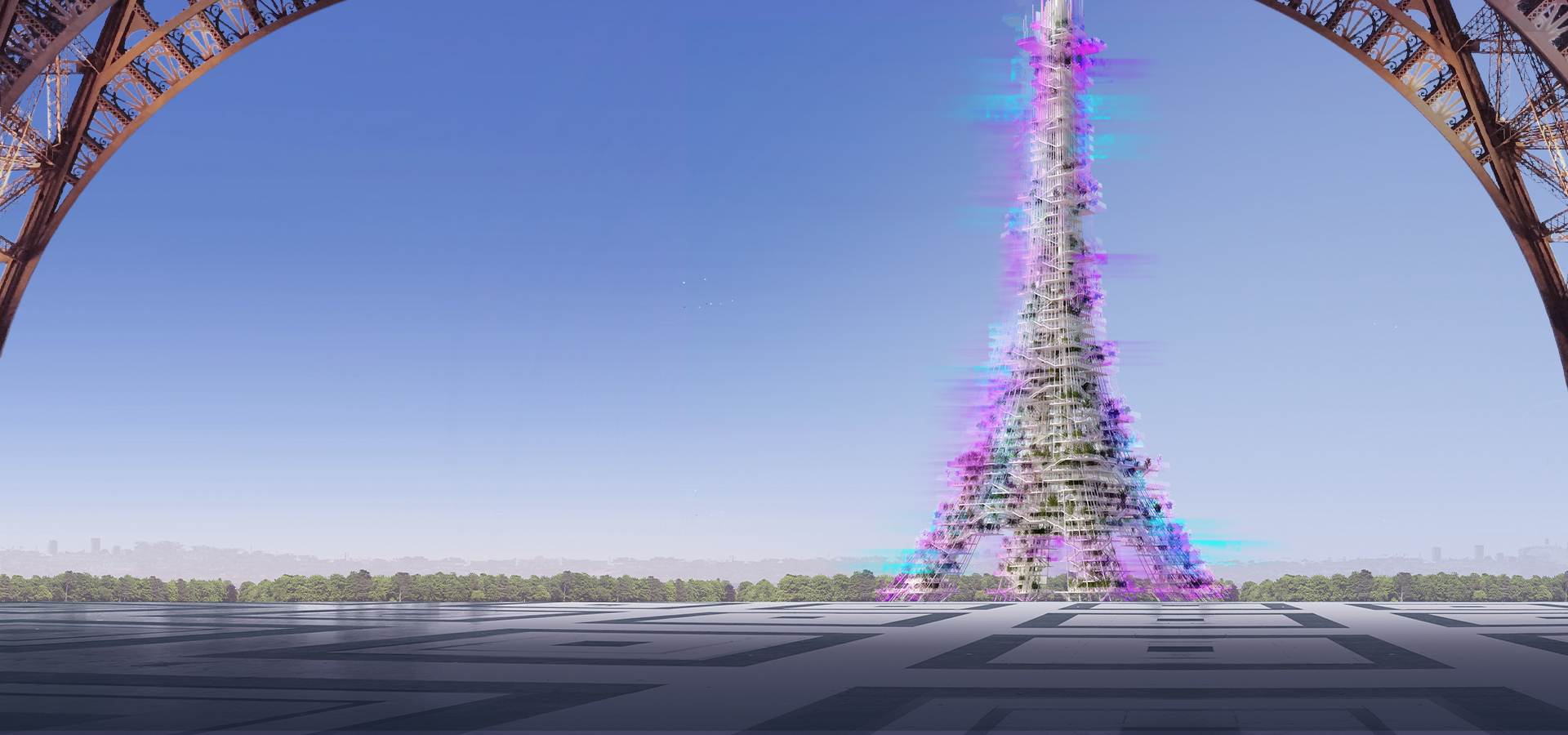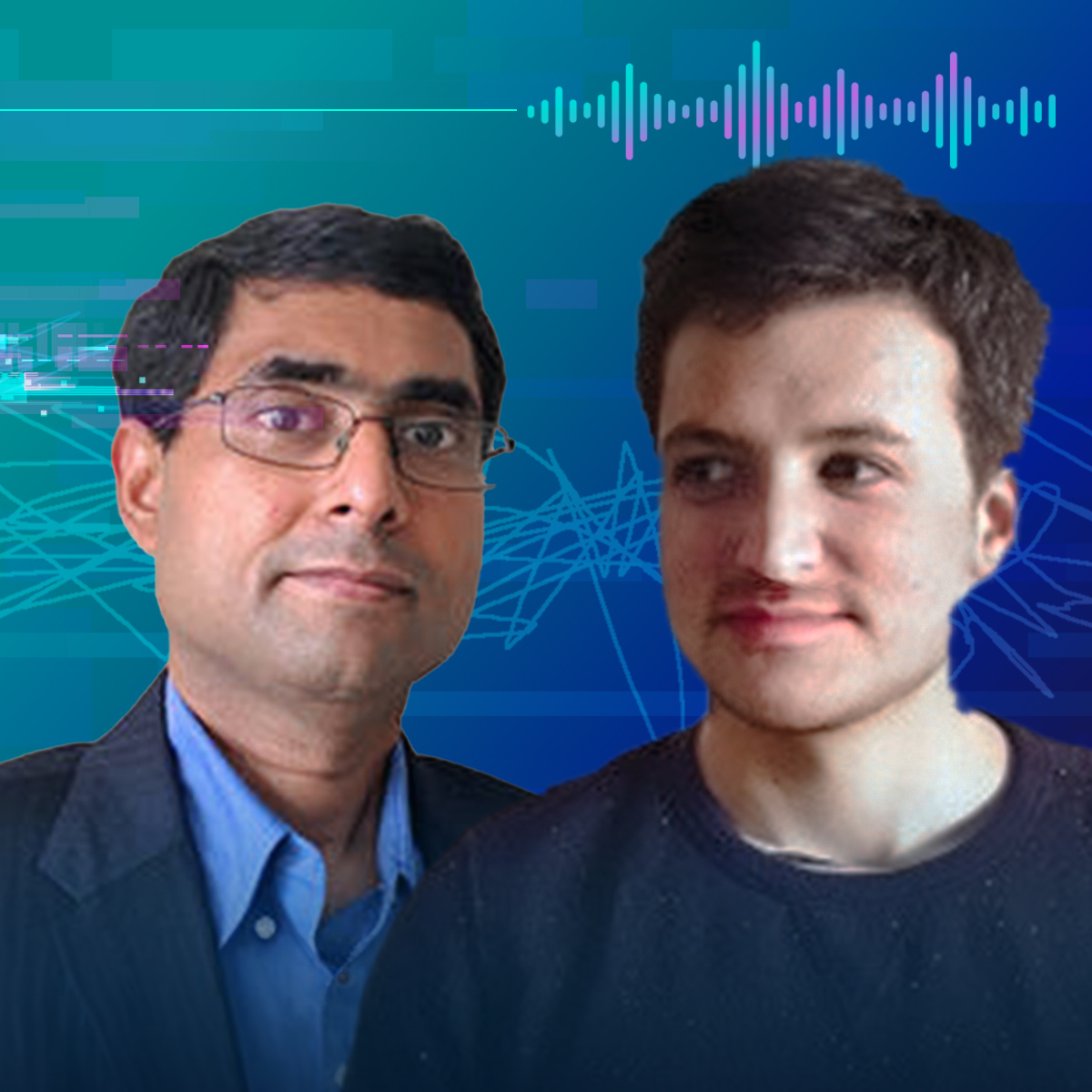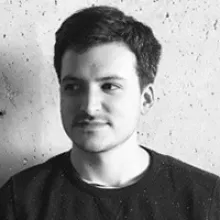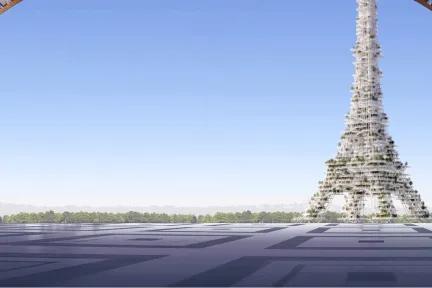
#14: How is Productization Revolutionizing Construction?
Everything you’ve ever wanted to know about productization — a modular approach to product design — and its impact on the construction industry.
#14: How is Productization Revolutionizing Construction?
Productization — a modular approach to product design long used in the manufacturing sector — is revolutionizing the construction industry. Is it the natural next step of mass production and standardization? Find out in this episode.
This episode is part of the Building Tomorrow project. Click here to find out more.

Meet our speakers


“With productization, we are able to reuse knowledge across projects. So, this greatly reduces the design and construction time... some projects can save up to 50% of design time by maximizing this reuse.”
- Karun Chakravarthy
Read the transcript
Narrator: Welcome back to Disruptors Unleashed, the series that explores the disruptive technologies shaping our world, and the trailblazers igniting change across industries. In our previous episode, we discussed how disassembly can help achieve circularity, with Tim McAloone from the Technical University of Denmark.
Now, we look at inventory. Specifically, how big data, 3D printing, and automation can be harnessed to minimize inventory, maximize throughput, and revolutionize inventory management. Our guests are Melanie Anthony and Mike Bradford from Dassault Systèmes.
Melanie: Hello and welcome to our conversation on manufacturing topics and trends. The future is lean, agile and digital. With me today is Mike Bradford, DELMIA's Strategic Business Development Director. Hello Mike, and thank you for joining us today.
Mike: Hi, Melanie, thank you for having me.
Sriyani Rao, Host: Karun, let's start with the basics: What is productization in the context of the construction industry?
Karun: A traditional construction process rely on what's called bespoke design. So, each project is designed independently, constructed independently. So, there is very limited knowledge reuse across different projects. So, with productization, we are trying to bring some of the best practices from the manufacturing industries, like modularity, into the construction industry.
So, what we do is, we take a building and break it down into various modules, interchangeable modules, by defining standard interfaces. So, this allows us the flexibility of customizing the building based on individual project needs, but at the same time, reduce greatly the time to construct, the time to design, and also the wastage for each building. So, we are able to maximize the reuse across products.
So, productization is actually a direct heritage of Gustave Eiffel, the Eiffel Tower project.
Sriyani: Nicolas, how do you look at productization from a design standpoint?
Nicolas: Productization is a strategy for delivering a customized and efficient construction solution. This approach uses the virtual twin to enable the application of generative, configurable design strategies. So at the end, the virtual twin is not a still representation of the tower at a certain moment. It's actually a configurable medium that is fed by libraries of different modules. So we had modules for the slabs, we had modules for the stairs, for the curtain walls, and so on, and so forth. And we just had, basically, to attach those libraries to the virtual twin. So this way, we were able to create many design variants. What would happen if the structure was in steel, in concrete, in timber? And this way, we would also be able to monitor the different life cycle KPIs, to monitor the logistic scenarios.
And so that's the power behind productization, is that the competence of your building, stops being just... I would say, simple representation of it. It's actually the exact representation of how it's manufacturable, fabricable... assemble on site, and also recyclable. It's the whole life cycle process that is actually brought into productization at a very early stage of the project.
Sriyani: Right. So, what would be the benefits of productization versus the standard processes and practices in traditional building construction?
Karun: So, productization has a number of benefits. We look at the capital projects industry, about 80% of the projects are over schedule or over budget, right? So, with productization, we are able to reuse knowledge across projects. So, this greatly reduces the design and construction time. According to some reports by McKinsey, some projects can save up to 50% of design time by maximizing this reuse.
We are also promoting the manufacturing of these modules in offsite factories. So, we are greatly increasing the quality. Since these modules are produced in a very controlled environment in a factory, this also reduces a lot of the wastage. So, traditional construction industry processes result in about 30% of wastage, both material and labor. By having this productization approach, by producing products in factories, by reusing designs across projects, we are able to reduce this wastage significantly as well.
One of the great challenges we have in the construction industry now is the shortage of skilled labor. So, it's very challenging for many building projects to find the skilled labor, contractors, for on-site work. So, with productization, we are able to move this labor requirement to more factories, where labor can be more efficient. This way, we are also minimizing the number of laborers that are required on-site. So we are addressing the skilled labor challenge as well. So all of these benefits of productization leads to better quality designs, lower costs, lower project standard price.
Nicolas: The benefits of productization for the construction industry is absolutely huge, because you're basically bringing manufacturers and fabricators at a very early stage of the project. And they are really involved in the technical solution, definition, with the architects, with designers, and engineers. So this, actually, secures a lot of the rest of the project phases. And by reducing the risk of errors, design clashes, you're increasing their ability to be more innovative, to be also more sustainable, to design better products, and also to modularize those products so that they can be more agile, in a sense.
This is exactly what we've done with the tower, is that basically, we productize, actually, all the items of this tower, thinking of how they would be produced, assembled inside, but also disassembled. Because at the end, the virtual twin of this tower is actually made of modules. If they can be assembled, it can also be disassembled, stored somewhere else, and rebuilt somewhere else.
Sriyani: Nicolas, is productization in construction the natural next step of mass production and standardization?
Nicolas: So what's important to understand is that modularization doesn't mean standardization. A module is actually a smart, adaptive component that is able to adapt itself to different cases, to slightly change, because it's a configurable component. So we're not in the logic of mass production, we're in the logic of smart customization, based on generative configurability. And that's exactly what we did for all the parts of our tower, whether it's for the beams, for the pillars, the slabs, even the elevators, everything was basically modularized, to be able to be slightly adapted to the project without disrupting the supply chain, or its manufacturability, or its logistics.
Karun: Productization is... maybe, revolutionary for the construction industry, to some extent. It's transformational in nature, but the concepts of productization, such as the modularity, the concepts of offsite manufacturing, these have been used in other industries like automotive, industry equipment, aerospace, for many, many years.
So, we are taking those principles, bringing them to the construction industry, which has not seen transformation for several decades, and we are adapting it to the construction industry, because there are some differences between the construction industry and the manufacturing industry, where some work still needs to be done on-site, where the product have to be assembled on-site and so on. So we have to adapt this product, this modularity, and offsite manufacturing to the construction industry. And that's what we bring with the productization.
Sriyani: How do you see productization impacting the industry?
Nicolas: The modular approach is pretty revolutionary in the construction industry. Because what you do, is that you bring fabricators and subcontractors much earlier in the design process. And they stop being downstream, dealing with design issues and clashes. They're able to take part in the design process, and they're actually taking part in the technical solution definition, which actually pushes them to be more agile in the way they design their own product. That's the first thing.
They need to modularize it, they need to also, to start thinking of cycle and pre-fabrication. Because at the end, we also want to simplify the construction process, and the logistics. So, they need to think of their product as a manufacturable item that will be assembled in the factory, that will be also a multi-trade component, so that it pushes them also to work with other subcontractors, and to basically think in terms of sort of logistics, and assembly on site.
That's the first thing. The second thing is also that it pushes the subcontractors to think more in an adaptive way. They stop designing products that is a one-of-a-kind, they need to design a one-solution product that is going to answer multiple problems. So it's also about integrating a generative aspect to their product. At the end, they need to configure the right product for the right case.
Sriyani: Karun, what would be the aim of turning artistic designs into something that can be manufactured?
Karun: So, the aim of productization is not to limit in any way the design. The productization approach allows us to take the artistic design that an architect will have... architects like to have as much creativity as possible, and it really takes this artistic design and breaks it down into manufacturable modules. So, modules that can be manufactured, that can be integrated. So, it strikes the right balance between creativity and manufacturability.
So, it's not... the productization approach is not about restricting creativity, or standardizing all buildings so they all look the same. But it's about facilitating personalized production. It's about avoiding one-off projects with bespoke designs. It's about capturing and reusing knowledge and best practices across projects. So this allows us to increase the sustainability, reduce costs, reduce time, across projects.
Sriyani: What role does productization play in circularity?
Karun: Productization is an excellent way to lead to circularity. The productization approach reduces the cost from a sustainability point of view, it reduces waste and carbon emissions through all the phases of the project, from design, construction, into operations. With productization, since we are breaking down the building into smaller, interchangeable modules, we can think of a future scenario where we will be able to dismantle one module of it to perform upgrades to the building, by replacing that with the newer modules, for example.
We can also think of reusing the modules that have been dismantled into other buildings where these can be repurposed. So, this approach fully supports the circular economy principles. So, this approach, I think, will lead to a lot of satisfaction to both the city and the citizens, and fully meet their expectations for circularity and sustainability.
Sriyani: Nicolas, you talked earlier about the virtual twin in productization. Can you talk more about its benefits, and how the 3DEXPERIENCE platform comes into the picture? This question is for you as well, Karun.
Nicolas: So, the benefit of the virtual twin is is actually huge, because it's an incredible, collaborative medium that allows you to have one reference that answers multiple questions. A virtual twin is basically a medium that is able to generate a lightweight model for the renderings. It's able to generate a physical model with all the material properties for the life cycle analysis. It's also able to generate a much more detailed version of the model For the Bill of Material generation.
So, the virtual twin is actually the most agile, most flexible medium, that is actually built by many different people, that is able to give many different answers at any time. So that way, you're really able to link, I would say, early-stage modeling oof the project, with its detailed phase, with its simulation phase, whether you're simulating structural analysis or CFD analysis, and then go down to... how he's going to be produced, linking that with its supply chain, how it's going to be assembled off-site, how it's going to be brought to the site, assembled on site, and so on, and so forth. So, the virtual twin is actually merging all those dimensions in the 3DEXPERIENCE platform.
Karun: So, the 3DEXPERIENCE platform is ideally suited for this type of scenario, because we are able to connect all the stakeholders involved in a project, from owners, architects, and contractors, to building product manufacturers, and so on. It can also manage all the design data, or the multidisciplinary the multi-trade design data, the multi-level of detailed design data from concept design, to detailed design to construction data. It can also manage the data across the life cycle of the project from design, construction to operation.
The 3DEXPERIENCE platform is ideally suited for the productization approach like this. The virtual twin also allows us to validate the design, validate the construction, validate the operational behavior during operations, or energy consumption. for example, at a very early stage. The virtual twin is a very complete representation of the building. So, not only the design information, but also the behavioral information, and all the attributes and the process information that's needed to complete the building definition. So the 3DEXPERIENCE platform and the virtual twin, I think, are ideal tools to support the productization approach.
So, the building industry ecosystem is pretty fragmented. So, there are a number of stakeholders who need to come together to work on a project of this magnitude. So, we start out with the owners who will contract the architects, who will do the initial concept design and create permit drawings, and so on.
We have, obviously, then the architects take the product modules that have to be defined by the building product manufacturers, such as bathrooms, stairs, and slabs, and so on, and they have to incorporate that into the into the design. Then, this design is handed off to the general contractor, who has to work with the building product manufacturer, the fabricator, and the subcontractors to install this. So, they become the prime integrators of the project during the construction phase.
With our 3DEXPERIENCE platform, we are able to connect all the stakeholders, to make sure that they are working on the single model, the single project information during the planning, design, and construction phases. You always have access to the latest data in the project. So, they are working on the single source of truth, and they are able to make the best decisions for the project going forward.
Nicolas: So, the thing that we did was to bring everyone into the 3DEXPERIENCE platform. On one hand, you have designers, architects, engineers, who are basically building the 3D specifications of the whole tower, which we can call the perimetry skeleton. And they're defining all the requirements, and the specifications of the functional spaces, the paths, the different systems that are attached to this building.
And then on the other side, you have the subcontractors who need to digest this data in order to create the virtual representation of their project, and modularize it. So in the middle of this, you have the general contractor, who's the prime integrator of this knowledge, who needs to make sure that all this information is passed seamlessly from one side to the other. And by bringing all those people into the 3DEXPERIENCE platform around one single virtual twin, is actually the key for digital continuity, for also, success in the project, because you go beyond the only 3D modeling aspect, you're able to simulate structural analysis, fluid analysis, logistics, and so on, and so forth. So, it's like a seamless loop that goes through the different dimensions of the building.
The general contractor needs to make sure that the virtual twin that is modeled by the architects can be broken down into the different product lines, so that the different subcontractors know exactly what they need to study, and what they need to manufacture, and eventually to budget. You're going to have one product line for the timber, one product line for the steel, one product line for all the electrical equipment. And all of this can be monitored throughout the project.
Sriyani: Thank you to both Nicolas and Karun for helping to illuminate the game-changing nature of productization in the construction industry. Here's hoping that this will bring about a sea change in how buildings are designed and produced. Because ultimately, we're all working together for a more sustainable future for everyone.
Narrator: Disruptors Unleashed is produced by Dassault Systèmes. For more episodes, follow us on Apple Podcasts, Spotify, Deezer, or your nearest streaming platforms. To learn more about Dassault Systèmes, visit us at 3ds.com.
Learn more

Discover how players in Infrastructure & Cities can join forces and act now for a more sustainable future.



